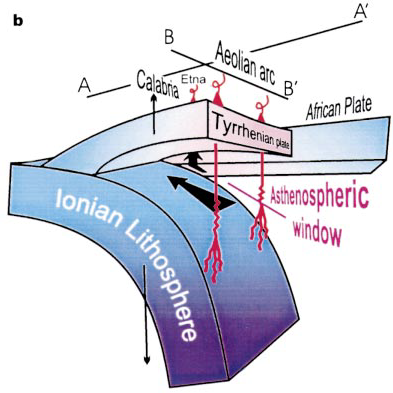Italy is one of the countries with the highest number of volcanoes in the world, and this is because of its complex geological history.
Starting from Tuscany, in different periods of activity a volcanic chain developed that ends with Vesuvius in the Italian peninsula and with the Aeolian Islands in the sea.
Etna is one of the most studied volcanoes in the world because of its position, which from a geological point of view is quite unusual. In fact, this volcano is isolated and not within an archipelago or chain of volcanoes. In addition, the magma of Etna is very similar to the magma emitted in a rather distant archipelago, in Hawaii.